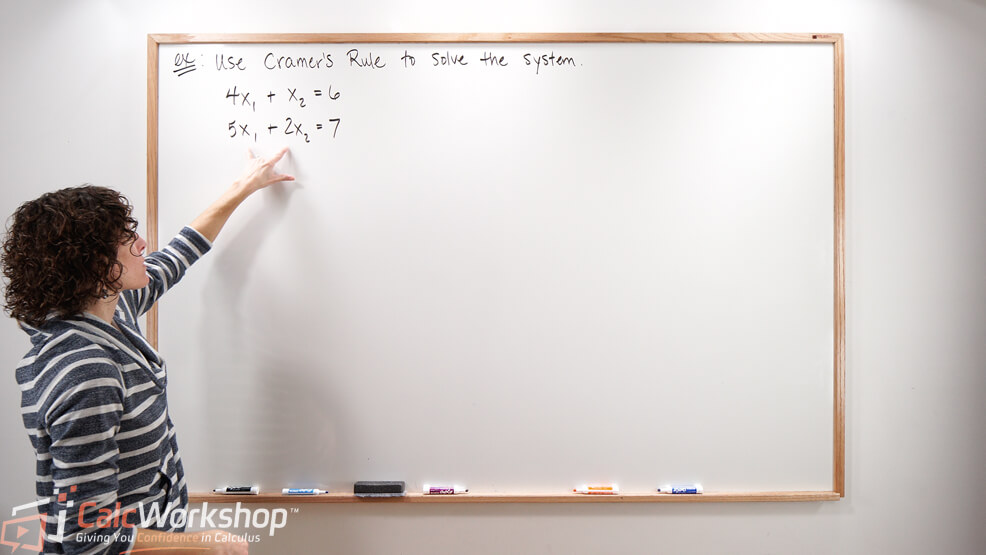Did you know that we can use the power of determinants to obtain theoretical formulas and geometrical interpretations, such as the area and volume of linear transformations?

Jenn, Founder Calcworkshop®, 15+ Years Experience (Licensed & Certified Teacher)
How?
By using a vital theorem called Cramer’s rule .
Understanding Cramer’s Rule
Cramer’s rule helps us study how the solution of
If we let
Okay, so this definition may not make much sense initially, but it’s pretty easy once you see it in action. So, let’s look at an example.
Example of Cramer’s Rule
Consider the following system. Use Cramer’s rule to solve.
First, let’s write the linear system as a matrix equation.
Next, we will find the determinant of matrix A.
Now, we will replace the columns of
Finally, we will divide the quantities to find the unique solution to the linear system.
So, that wasn’t so bad?
Introduction to Inverse of Matrices Using Determinants
And Cramer’s rule leads to a fantastic general formula for the inverse of an nxn matrix.
Remember when we learned about how to find the inverse of a
Well, with the help of determinants, we are able to generalize the inverse formula from
If
Granted, the adjugate looks scary at first glance, but it’s easy to find if you know the three simple steps.
Computing the Adjugate of a Matrix
Suppose
First, we will calculate the cofactors for matrix A, using expansion by minors for every entry in matrix A and calculating the remaining determinant.
Giving us
Next, we will apply the array of signs (i.e., seat assignments…seat “sign”ments) to our cofactors.
Lastly, we transpose the cofactor matrix.
And that’s it! Find cofactors, apply signs, and then transpose!
Don’t worry! We’ll do several examples in the video so you can get the hang of it.
Applications of Determinants in Geometry
Now it’s time to see how determinants help us find area and volume for parallelograms (2D) and parallelepipeds (3D)
If
In fact, in the video, we will also learn how translating a parallelogram does not change its area. Moreover, this idea can be used to describe geometric properties of linear transformations in the plane.
Let
If
And if
Example of Determinants in Linear Transformations
For example, let
Compute the area of the image of S under the mapping
First, we will create our
Next, we will calculate the determinant of matrix
Finally, we multiply the absolute value of these determinants to find the area of the image.
Therefore, the area of the parallelogram under the mapping has a value of 28 square units!
Next Steps
In this lesson, you will:
- Apply Cramer’s Rule to solve a given system
- Learn how to compute the Adjugate of a matrix to find the inverse of an nxn matrix
- Explore applications of determinants to calculate:
- The area of a parallelogram
- Volume of a parallelepiped
- The area or volume of an image under a specified mapping
Get ready for a great learning experience and jump right in!
Video Tutorial w/ Full Lesson & Detailed Examples

Get access to all the courses and over 450 HD videos with your subscription
Monthly and Yearly Plans Available
Still wondering if CalcWorkshop is right for you?
Take a Tour and find out how a membership can take the struggle out of learning math.